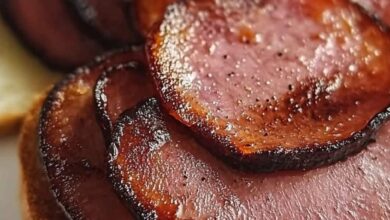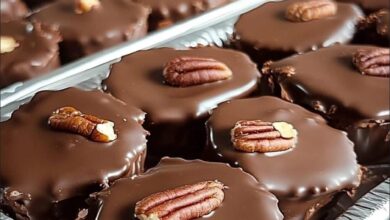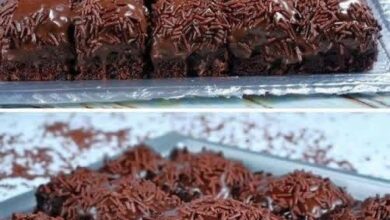Mamie Eisenhower’s Famous Million Dollar Fudge


MAMIE EISENHOWER’S FUDGE
A COMPLETE DETAILED RECIPE
Introduction
Mamie Eisenhower’s Fudge, also famously known as Million Dollar Fudge, is one of the most iconic American fudge recipes. It became popular in the 1950s because Mamie Eisenhower, the First Lady of the United States, loved making this no-fail, ultra-creamy, chocolate-loaded treat. Unlike traditional fudge that requires precise temperatures, this recipe uses marshmallow creme, making it smooth, rich, and almost impossible to mess up. It quickly became a holiday classic across America and remains beloved today.
Ingredients
4 cups granulated sugar
1 12-ounce can evaporated milk (not sweetened condensed)
1 tablespoon butter
1 12-ounce package semisweet chocolate chips
1 12-ounce package German sweet chocolate, chopped
1 7-ounce jar marshmallow creme
2 cups chopped pecans or walnuts (optional)
1 teaspoon vanilla extract
Instructions
In a large heavy pot, combine sugar, evaporated milk, and butter.
Place over medium heat and bring to a boil, stirring constantly.
Once it begins boiling, continue to cook for 5 full minutes, stirring non-stop to prevent burning.
Remove the pot from heat immediately once the 5 minutes are complete.
Add the semisweet chocolate chips, the German sweet chocolate, and the marshmallow creme.
Stir until all chocolate and marshmallow are completely melted and smooth.
Add the vanilla extract and nuts (if using).
Stir again until everything is evenly incorporated.
Pour the hot fudge mixture into a greased 9×13-inch baking dish or lined pan.
Let the fudge cool at room temperature until firm enough to cut.
Slice into squares and serve.
Methods
Use a heavy-bottomed pot to prevent sticking and scorching.
Stir constantly during boiling to maintain smoothness.
To ensure creamy fudge, mix thoroughly after adding the chocolates and marshmallow.
For easier slicing, chill the fudge in the refrigerator for about an hour before cutting.
Store in an airtight container at room temperature for softer fudge, or refrigerate for firmer squares.
History
Mamie Eisenhower introduced this recipe to the public during Dwight D. Eisenhower’s presidency. The First Lady was known for her hospitality and love for making sweet treats. Newspapers and women’s magazines published her recipe, calling it Million Dollar Fudge because it tasted so luxurious. Despite the fancy name, it is famously easy to make, which helped it spread across homes in America during the 1950s and 1960s. It is still a holiday tradition in many families.
Benefits
Very easy to make compared to traditional fudge.
Does not rely on precise candy thermometer temperatures.
Rich, smooth, creamy texture.
Perfect for parties, gifting, and holiday tables.
Stores well and freezes well.
Family friendly and great for batch cooking.
Formation
The fudge forms when the sugar mixture thickens during boiling and stabilizes with the marshmallow creme. The melted chocolate emulsifies with the syrup, creating a silky, dense texture. Once cooled, the fudge sets into perfect squares.
Nutrition (approximate per piece, depending on size)
Calories: 150 to 200
Carbohydrates: High due to sugar
Fat: Moderate to high from chocolate and nuts
Protein: Low
Fiber: Small amount if nuts are included
Sugar: Very high
Note: This is an indulgent dessert recipe.
Conclusion
Mamie Eisenhower’s Fudge is a timeless, luxurious, creamy chocolate fudge that earned its legendary reputation because it is so easy to make and unbelievably delicious. It is perfect for holidays, gatherings, homemade gifts, or anytime you want a classic old-fashioned chocolate treat. Its history connects generations, and its flavor keeps it loved decade after decade.
Lovers
Chocolate lovers adore it because it uses two different chocolates.
Holiday bakers love it because it is reliable and foolproof.
Families love it because one batch serves many people.
Kids love it for its smooth, sweet, melt-in-your-mouth texture.
Adults love it because it tastes like the classic fudge from childhood.
If you want, I can also give you
A stovetop version
A microwave shortcut version
A nut-free version
A dark chocolate version
Or the recipe rewritten in French or Arabic.



